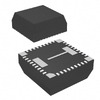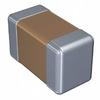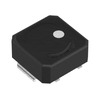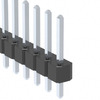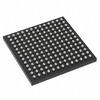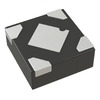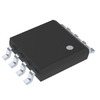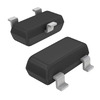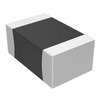LM358AP Symbol, Base Plane, and Pinout
Catalog
Introduction to LM358AP
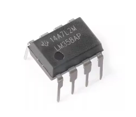
LM358AP is a dual-channel high-gain frequency compensation operational amplifier. It consists primarily of two independent high-gain frequency compensated operational amplifiers designed to operate on single or dual supplies over a wide voltage range. Operation with dual supplies is also possible if the voltage difference between the supplies is 3V to 32V and VCC is at least 1.5V above the input common-mode voltage. The op amp has a temperature operating range of 0°C to 70°C. It uses bipolar technology and contains 2 channels per chip. It is mainly used in DC amplification modules, sensor amplifiers and all traditional op amp circuits, and enables easier implementation of these circuits in single supply voltage systems.
Alternatives and equivalents:
• LM358P
LM358AP symbol, footprint and pin configuration

Where is LM358AP used?
• Electronic point-of-sale systems
• Desktop PC and motherboard
• Indoor and outdoor air conditioners
• Washers, dryers, and refrigerators
• Power supplies and mobile chargers
• Multi-function printers
• Uninterruptible power supplies
• Merchant network and server power supply units
• AC inverters, string inverters, central inverters, and voltage frequency drives
• Motor control: AC induction, brushed DC, brushless DC, high-voltage, low-voltage, permanent magnet, and stepper motor
Technical advantages of LM358AP
The following lists the technical advantages of LM358AP:
Short-circuit protected output: The LM358AP features a short-circuit protected output that protects the amplifier from damage caused by short-circuiting the output. This design improves the reliability and durability of the device.
Dual op-amp design: The LM358AP integrates two independent op-amp amplifiers, which means it can process two independent voltage signals at the same time. This design makes the circuit design more flexible and can meet the needs of more complex circuits.
Large input resistance: The LM358AP has a high input resistance, which is less likely to affect signal quality when connected to external circuits. This allows it to have better performance in signal amplification, filtering and other applications.
High gain bandwidth product: The LM358AP has a relatively large gain bandwidth product, which can provide stable amplification performance at higher frequencies. This allows it to perform well in applications that require the processing of high-frequency signals, such as radar and communications.
Low power consumption: The LM358AP employs a low-power design that maintains minimal supply current consumption, irrespective of the supply voltage magnitude. This makes it very popular in applications that require low power consumption, such as battery-powered devices and portable equipment.
Wide common-mode input range: The LM358AP's common-mode input range includes negative supplies, which eliminates the need for external bias components in many applications. At the same time, its output voltage range also includes the negative supply voltage, further increasing its application flexibility.
Wide voltage range: The LM358AP is capable of operating over a wide range of supply voltages, providing stable performance over both single- and dual-supply voltages. This makes the LM358AP suitable for a variety of power supply environments, especially in the case of large fluctuations in supply voltage, its performance is particularly good.
Specifications of LM358AP
• Part Status: Active
• Manufacturer: Texas Instruments
• Package / Case: PDIP-8
• Packaging: Tube
• Technology: Bipolar
• Slew Rate: 300 mV/us
• Input Bias Current: 100 nA
• Gain Bandwidth Product: 700 kHz
• Supply Voltage: 3V ~ 32V
• Operating Supply Current: 350 uA
• Operating Temperature: 0°C ~ 70°C
• Common Mode Rejection Ratio: 80 dB
• Pin Count: 8
• Mounting Style: Through Hole
• Number of Channels: 2 Channel
• Length/Width/Height: 9.81 mm/6.35 mm/4.57 mm
• Product Category: Operational Amplifiers - Op Amps
Layout of LM358AP
Layout example
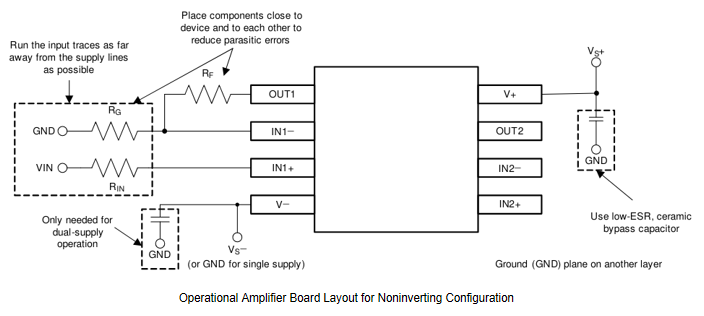
Layout guidelines
For best operational performance of the device, use good PCB layout practices, including:
Keep the length of input traces as short as possible. Always remember that the input traces are the most sensitive part of the circuit.
Place the external components as close to the device as possible. Keeping RF and RG close to the inverting input minimizes parasitic capacitance.
To reduce parasitic coupling, run the input traces as far away from the supply or output traces as possible. If it is not possible to keep them separate, it is much better to cross the sensitive trace perpendicular as opposed to in parallel with the noisy trace.
Consider a driven, low-impedance guard ring around the critical traces. A guard ring can significantly reduce leakage currents from nearby traces that are at different potentials.
Separate grounding for analog and digital portions of circuitry is one of the simplest and most-effective methods of noise suppression. One or more layers on multilayer PCBs are usually devoted to ground planes. A ground plane helps distribute heat and reduces EMI noise pickup. Make sure to physically separate digital and analog grounds, paying attention to the flow of the ground current.
Noise can propagate into analog circuitry through the power pins of the circuit as a whole, as well as the operational amplifier. Bypass capacitors are used to reduce the coupled noise by providing low-impedance power sources local to the analog circuitry.
• Connect low-ESR, 0.1-µF ceramic bypass capacitors between each supply pin and ground, placed as close to the device as possible. A single bypass capacitor from V+ to ground is applicable for single supply applications.
Precautions for using LM358AP
When we use LM358AP, we need to pay attention to the following points to ensure its stable and efficient operation:
Static and dynamic loads: The output capability of the LM358AP amplifier is limited by its static and dynamic loads. Therefore, when using the LM358AP, we must pay special attention to its loading to ensure optimal performance and avoid possible performance degradation or damage.
Short-circuit protection: Although the LM358AP amplifier has been designed with short-circuit protection capability in mind, and is able to withstand damage from accidental short-circuiting to a certain extent, prolonged short-circuiting may still cause serious damage to it. Therefore, when using the LM358AP amplifier, we must be particularly vigilant and avoid prolonged short-circuit conditions.
Frequency response: The LM358AP has a limited gain bandwidth product. This means that in high frequency applications, its performance may be somewhat limited. Therefore, we need to pay special attention to matching the signal frequency with the effective bandwidth of the amplifier.
Supply voltage: The supply voltage range of the LM358AP is usually ±3 V to ±32 V. We need to make sure that the supply voltage is within this range and that the positive and negative supply voltages are symmetrical.
Heat dissipation: Even though the LM358AP comes in a small package, we still need to be concerned about heat dissipation in high power applications. If the amplifier overheats, it may cause performance degradation or damage.
Input and output ranges: It is important to understand the common-mode input range and output range of the amplifier. These two parameters define the range of signal levels over which the amplifier can operate properly. Exceeding these ranges may result in abnormal amplifier behavior, degraded performance, and possibly even outright damage to the amplifier.
Frequently Asked Questions [FAQ]
1. Why are operational amplifiers important?
You can think of op amps as analog insurance. With a long-standing role as a key building block in analog circuits, op amps manage useful functions like feedback control, differentiation, addition, multiplication, and integration.
2. Can LM358AP operate at high temperatures?
Yes, LM358AP is designed to operate over a wide temperature range, typically from -40°C to 125°C, making it suitable for use in industrial and automotive applications.
3. What are the typical applications of LM358AP?
LM358AP is commonly used in various analog circuits, such as voltage followers, integrators, differentiators, active filters, and instrumentation amplifiers. It is also suitable for battery-powered applications due to its low power consumption.
About us
ALLELCO LIMITED
Read more
Quick inquiry
Please send an inquiry, we will respond immediately.

MP9943GQ-Z Voltage Regulator Main Features and Applications
on August 26th
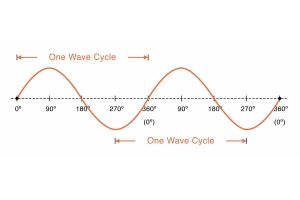
Sine Wave: Definition, Characteristics and Applications
on August 26th
Popular Posts
-

What is GND in the circuit?
on January 1th 3036
-

RJ-45 Connector Guide: RJ-45 Connector Color Codes, Wiring Schemes, R-J45 Applications, RJ-45 Datasheets
on January 1th 2607
-

Fiber Connector Types: SC Vs LC And LC Vs MTP
on January 1th 2162
-

Understanding Power Supply Voltages in Electronics VCC, VDD, VEE, VSS, and GND
on November 13th 2067
-

Comparison Between DB9 and RS232
on January 1th 1789
-

What Is An LR44 Battery?
Electricity, that ubiquitous force, quietly permeates every aspect of our daily lives, from trivial gadgets to life-threatening medical equipment, it plays a silent role. However, truly grasping this energy, especially how to store and efficiently output it, is no easy task. It is against this background that this article will focus on a type of coin cell battery that may seem insignificant on the...on January 1th 1754
-

Understanding the Fundamentals:Inductance Resistance, andCapacitance
In the intricate dance of electrical engineering, a trio of fundamental elements takes center stage: inductance, resistance, and capacitance. Each bears unique traits that dictate the dynamic rhythms of electronic circuits. Here, we embark on a journey to decipher the complexities of these components, to uncover their distinct roles and practical uses within the vast electrical orchestra. Inductan...on January 1th 1704
-

CR2430 Battery Comprehensive Guide: Specifications, Applications and Comparison to CR2032 Batteries
What is CR2430 battery ?Benefits of CR2430 BatteriesNormCR2430 Battery ApplicationsCR2430 EquivalentCR2430 VS CR2032Battery CR2430 SizeWhat to look for when buying the CR2430 and equivalentsData Sheet PDFFrequently Asked Questions Batteries are the heart of small electronic devices. Among the many types available, coin cells play a crucial role, commonly found in calculators, remote controls, and ...on January 1th 1640
-

What Is RF and Why Do We Use It?
Radio Frequency (RF) technology is a key part of modern wireless communication, enabling data transmission over long distances without physical connections. This article delves into the basics of RF, explaining how electromagnetic radiation (EMR) makes RF communication possible. We will explore the principles of EMR, the creation and control of RF signals, and their wide-ranging uses. The article ...on January 1th 1620
-

Comprehensive guide to hFE in transistors
Transistors are crucial components in modern electronic devices, enabling signal amplification and control. This article delves into the knowledge surrounding hFE, including how to select a transistor's hFE value, how to find hFE, and the gain of different types of transistors. Through our exploration of hFE, we gain a deeper understanding of how transistors work and their role in electronic circu...on November 13th 1562





